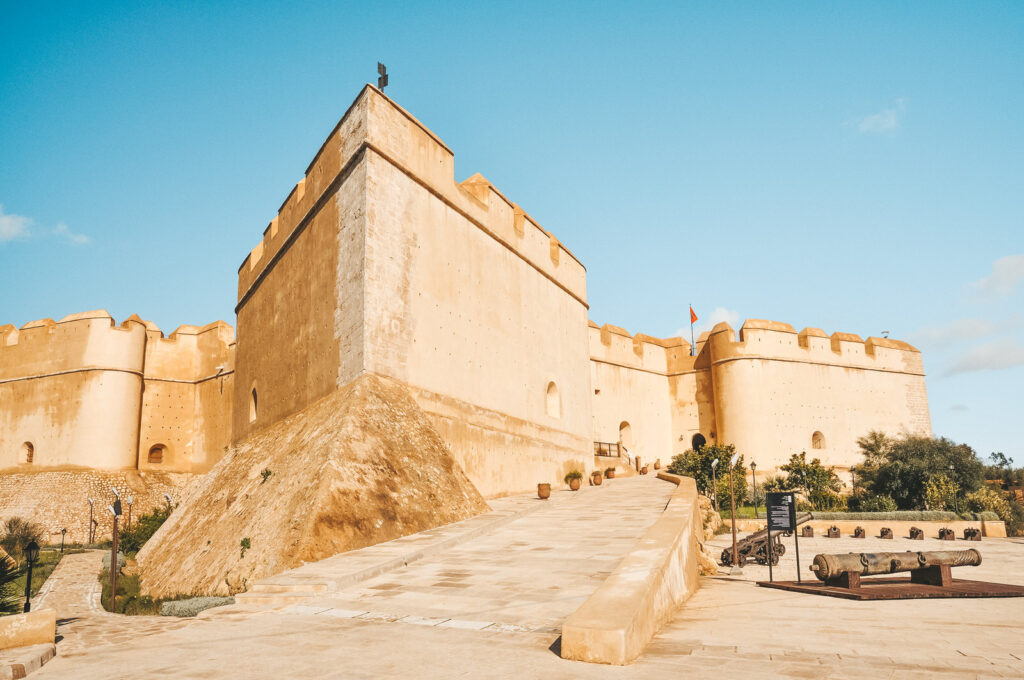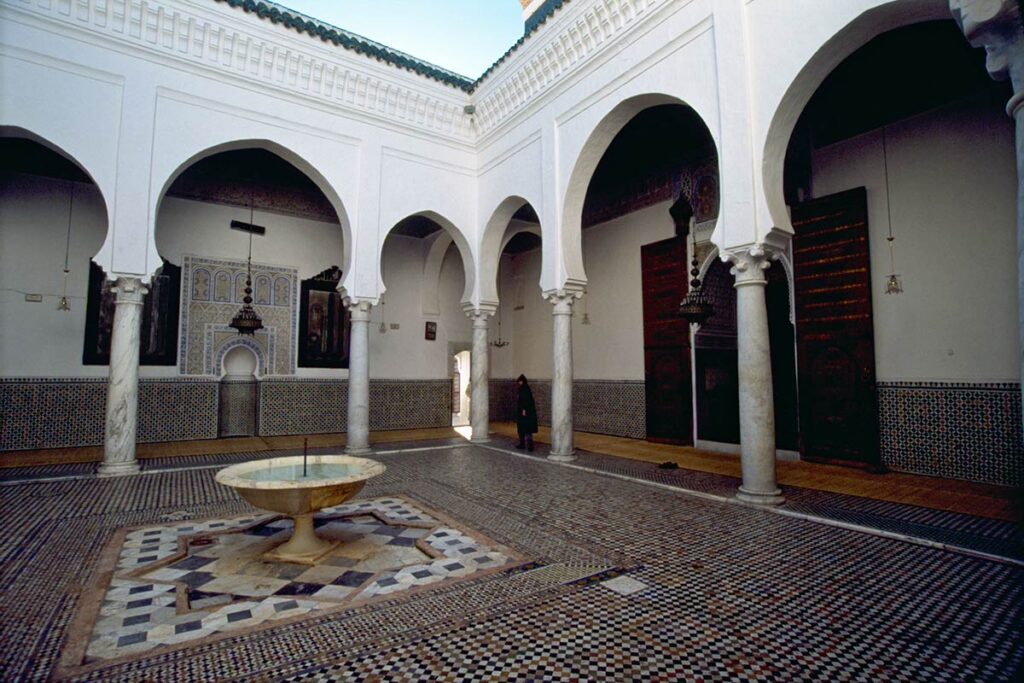Things To See And Do In Fez
The Borj Nord

Like its southern counterpart across the valley, the fortress of Borj Nord, perched on the hillside overlooking Bab Boujeloud, was built in the late sixteenth century by the Saadians to control the Fassis rather than to defend them. Carefully maintained, the borj now houses the country’s arms museum, full off daggers encrusted with stones and an interminable display of row upon row of muskets, most of them confiscated from the Riffians in the 1958 rebellion. The pride of place is a cannon 5m long and weighing twelve tonnes, said to be used during the Battle of the Three Kings. The main reason for coming up here, though, is for the commanding views across the Medina: a spectacular sweep of daily life that, together with the views from the Merenid tombs (a 500m walk round the hillside, along Avenue des Merenides), constitute the best panorama of the city.
The cult of Moulay Idriss

There is no particular evidence that Moulay Idriss II was a very saintly marabout, but as the effective founder of Fez and son of the founder of the Moroccan state he has considerable baraka, the magical blessing that Moroccans invoke, and his moussem brings the city to a standstill. Originally, it was assumed that Idriss had been buried near Volubilis, like his father, but in 1308 an uncorrupted body was found on the spot where his zaouia now stands and the cult was launched. Presumably, it was an immediate success, since in addition to his role as the city’s patron saint, Idriss has an impressive roster of supplicants: this is the place to visit for poor strangers arriving in the city, for boys before being circumcised and for women wanting to facilitate childbirth – and for some long-forgotten reason, Idriss is also the protector of Morocco’s sweetmeat vendors.
Things to see in Fez el Jedid

Unlike Fez el Bali, whose development and growth seems to have been almost organic, Fez el Jedid (“New Fez”) was a planned city, built by the Merenids at the beginning of their rule, under Sultan Abou Youssef in 1276, as a practical and symbolic seat of government.
The chronicles present the Merenids’ decision to site their city some distance from Fez el Bali as a defence strategy, though this would seem less against marauders than to safeguard the new dynasty against the Fassis themselves – and it was only in the nineteenth century that the walls between the old and new cities were finally joined. It was not an extension for the people in any real sense, being occupied largely by the vast royal palace of Dar el Makhzen and a series of garrisons. This process continued with the addition of the Mellah – the Jewish ghetto – at the beginning of the fourteenth century; forced out of Fez el Bali after one of the periodic pogroms, the Jews provided an extra barrier (and scapegoat) between the sultan and his Muslim faithful, not to mention a source of ready income conveniently located by the palace gates.
The Jews of Fez
The enclosed and partly protected position of the Mellah fairly accurately represents the historically ambivalent position of Moroccan Jews. Arriving for the most part with compatriot Muslim refugees from Spain and Portugal, they were never fully accepted into the nation’s life. Yet nor were they quite rejected as in other Arab countries. Inside the Mellah, they were under the direct protection of the sultan (or the local caïd) and maintained their own laws and governors.
Whether the creation of a ghetto ensured the actual need for one is debatable. Certainly, it greatly benefited the reigning sultan, who could depend on Jewish loyalties and also manipulate the international trade and finance that they came to dominate in the nineteenth century. But despite their value to the sultan, even the richest Jews led extremely circumscribed lives. In Fez before the French Protectorate, no Jew was allowed to ride or even to wear shoes outside the Mellah, and they were severely restricted in their travels elsewhere.
BAB BOUJLOUD

Located inside the medina, the entrance to the Bab Bou-Jeloud district is through its huge 1913 gate, decorated with blue and green tiles which are the colours of the city.
Inside this district, visitors can visit the Bar Batah Museum, which hosts the arts and traditions of the city.
It is housed in the palace of the same name, erected during the 19th century.
The Bou Inania Koranic school has an architectural style full of diverse ornamentation.
Built-in the middle of the 14th century, this madrassa is part of the process of the dynamization of the city initiated by the Merinid dynasty.
Tourists can also stroll along Talaa Kebira Avenue, one of the longest in the city, which is dotted with shopping boutiques.
Funduq al-Najjarin

The Najjarin Funduq was built in 1711/1122 AH by Amin Adiyil during the reign of the ‘Alawid Sultan Isma’il b. Muhammad I al-Sharif, al-Samin (1672-1727/1082-1139 AH). Located in the old city of Fez, or Fez al-Bali, the funduq opens onto the square of the Najjarin, or carpenters. It provided lodging and storage space for visiting merchants in three floors of rooms arranged around the central courtyard.
The funduq’s monumental portal and the adjacent fountain are focal points of the small square of the carpenters, and are decorated with carved cedar wood, colourful mosaic tile revetment, and intricately carved stucco. Their decoration and forms create visual connections between the exterior space of the square and the interior space of the funduq’s central courtyard, which is decorated with carved stucco and carved wooden balustrades.
The structure was completely restored between 1990/1410 AH and 1996/1416 AH. In 1998/1418 AH, as a result of a partnership between the Mohammed Karim Lamrani Foundation and Nejjarine Ensemble, the building now houses La Musée Nejjarine des Arts et Métiers du Bois, a private museum of Wood Arts and Crafts.